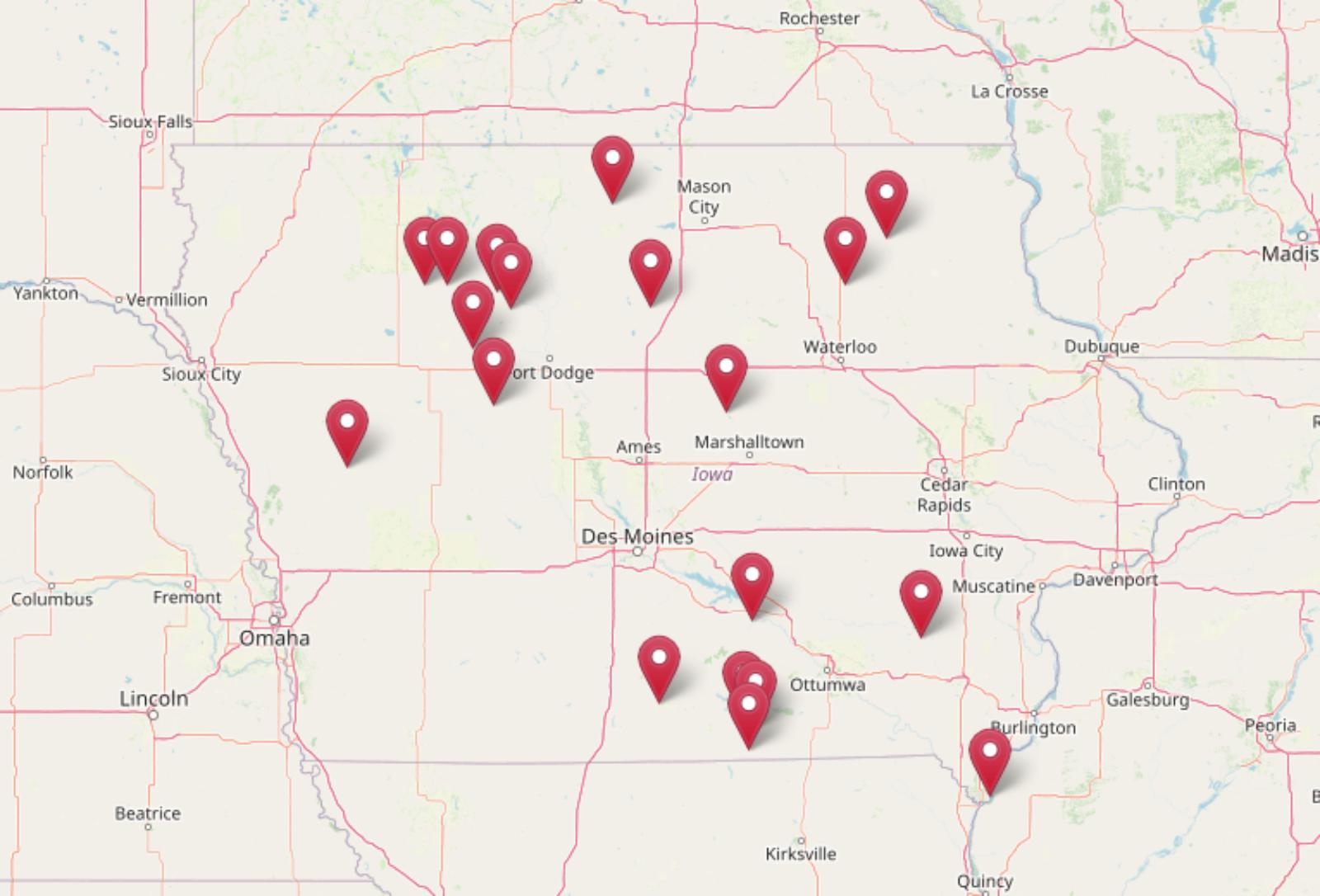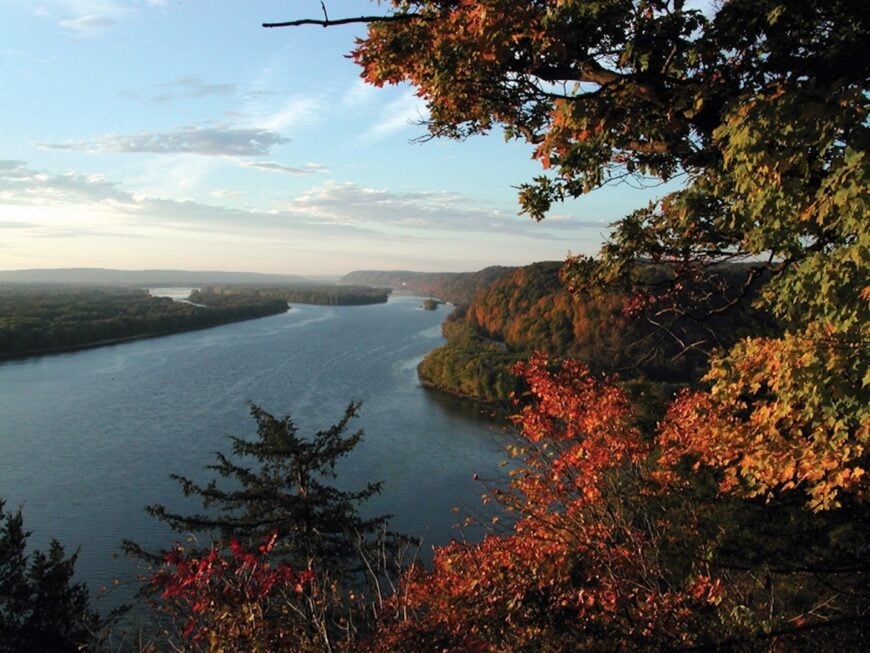
Eastern Iowa moves at a rhythm all its own, where the land folds into river valleys and every bluff seems to hold a secret. The Mississippi sketches the eastern edge like a broad frame, giving towns such as Lansing and Guttenberg their sense of permanence. Grain silos stand beside limestone storefronts, and the quiet is textured—alive with the sound of towboats, red-winged blackbirds, and courthouse bells rolling over the ridges. This is a region where the driftless landscape sets the tempo, slower and steadier than the interstates that skirt its edge.
The phrase “Driftless Area” carries more than geology; it’s a shorthand for survival, a landscape untouched by glaciers, where rivers cut deep and hills rise steep, giving every town a perch or a pocket to settle in. St. Donatus shows its Luxembourg roots in stonework that feels older than the state itself, while Volga rests along its namesake river as though it grew from the water’s bend. To travel here is to sense how the past and present braid together, unhurried but entirely awake.
Every town feels like a still-life painted with movement just outside the frame. In Elkader, the stone bridge hums with footsteps and river current. In Marquette, boardwalk planks carry the scuff of fishermen and schoolkids, both drawn to the same water. These are places that thrive on the intimate scale—where community picnics, chapel paths, and porch talk outlast the seasons.
Eastern Iowa is less a map of towns than a constellation of refuges, each with its own light. The roads curve like a deliberate invitation, carrying you through bluffs, cornfields, and valleys where the air feels easy to breathe. To enter this stretch of the state is to discover how seclusion can hold a kind of brilliance—an everyday elegance stitched into stone walls, river bends, and the long patience of the land.
25. New Albin — River’s Edge at the Far Northeast Corner
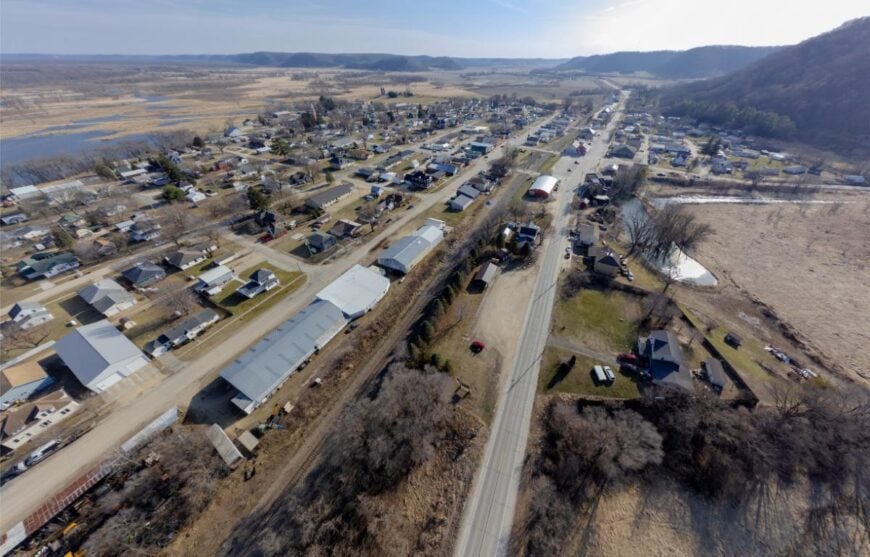
New Albin is where Iowa tapers into bluffs and backwaters, a tiny grid pressed between steep green hills and the Mississippi’s quiet sloughs. Its seclusion comes from geography itself—river to the east, forested ridges to the west, and only a trickle of traffic on the Great River Road. The vibe is woodsy and watchful: eagles wheeling overhead, towboat lights slipping by at night, neighbors chatting on deep porches. Cast for smallmouth from a gravel bar, wander the wildlife refuge boardwalks, or climb a bluff trail to watch fog burn off the river. A handful of shops, river guiding, and farm work keep life steady. At dusk, the water mirrors the sky until the town seems to float. It’s the kind of place that reminds you how quiet the world can be.
Where is New Albin?
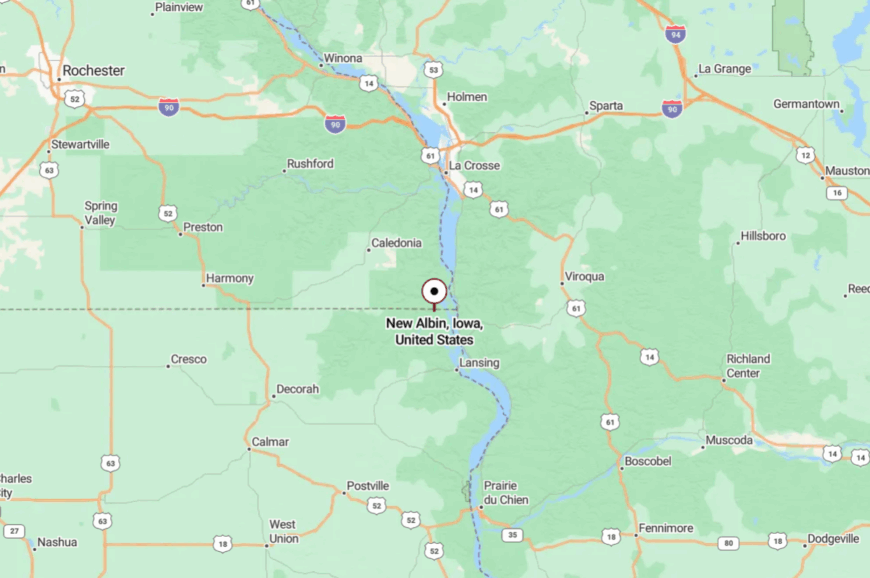
Tucked into Allamakee County at Iowa’s far northeast tip, New Albin sits along IA-26/Great River Road, just south of the Minnesota line. It’s roughly 20–25 miles northeast of Waukon.
You reach it on a curving two-lane that threads between bluffs and backwaters. Close to three states, yet sheltered by hills that make it feel worlds away.
24. Lansing — Bluff Town with a Steel Spine
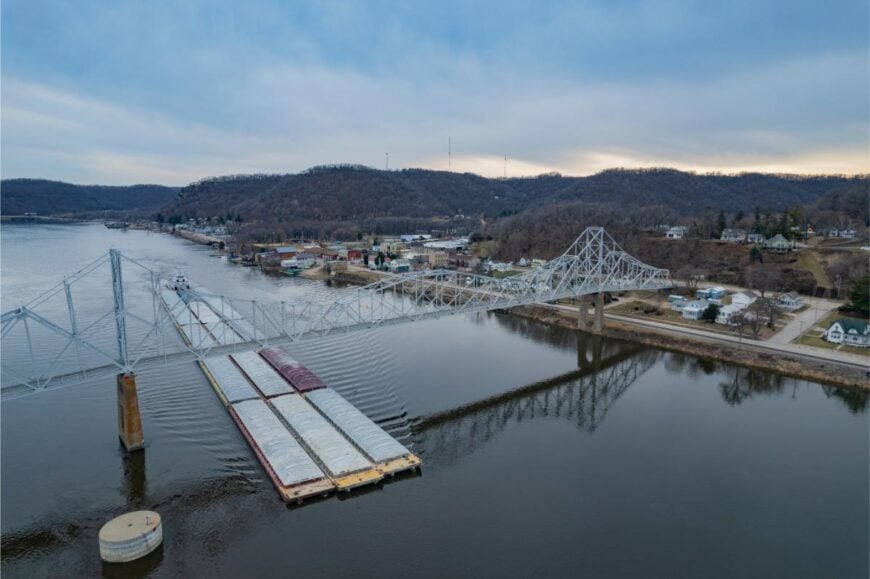
Lansing clings to a ledge above the Mississippi, its streets terraced under limestone bluffs and the airy arc of the Black Hawk Bridge. Seclusion comes from those bluffs and the long, scenic miles between interstates; people arrive on purpose here.
The mood is river-historic and outdoorsy—brick storefronts, bait coolers, and kayaks racked on truck beds. Climb Mt. Hosmer for a skyline view, cast for walleye at dawn, or browse a shop where maps and river lore share space.
Tourism, guiding, and small farms mingle with everyday errands. When barges slide past and the bridge hums, the town seems to breathe with the river. It’s a fine place to let time slow to water speed.
Where is Lansing?
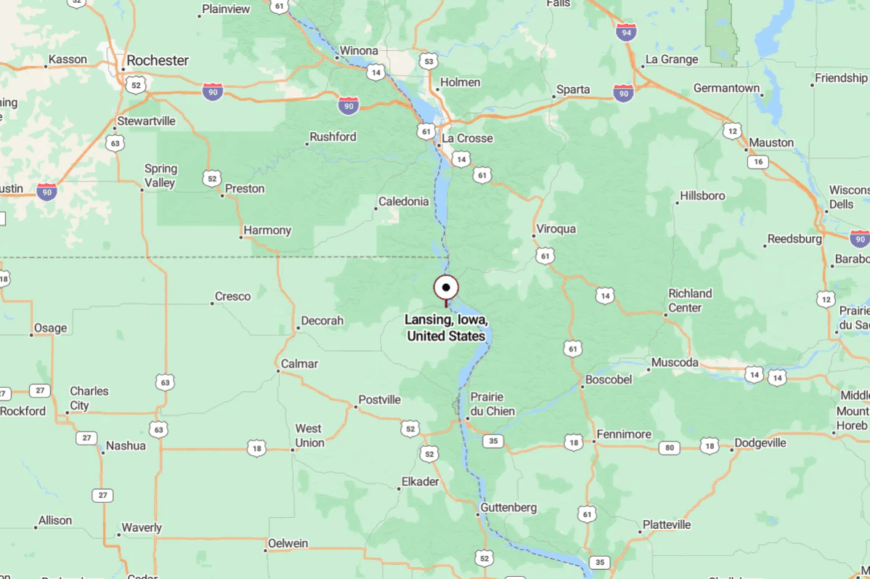
In Allamakee County, Lansing sits on the Mississippi River along IA-9/IA-26, about 30 miles east of Decorah. Approaches wind through high ridges and valleys before the river opens wide.
The final descent brings sudden blue water and steel trusses. It’s close enough for a day trip, but the bluffs make it feel hidden.
23. Marquette — Pocket Harbor Beneath the Bluffs

Marquette feels tucked in like a boat in a pocket harbor, cradled by bluff walls and the river’s braided backwaters. Its apartness stems from narrow streets and the way the land rises almost immediately behind the houses, keeping things intimate and hushed.
The vibe is river-rustic and curious: an old depot museum, a boardwalk, and fishermen swapping notes by the ramp. Stroll to the river overlook, walk the bridge path for views, or catch an eagle soaring over sandbars.
Small inns and outfitters anchor the economy. Evenings stretch long as barge lights draw gentle lines on the water. You come for the view and stay for the hush.
Where is Marquette?
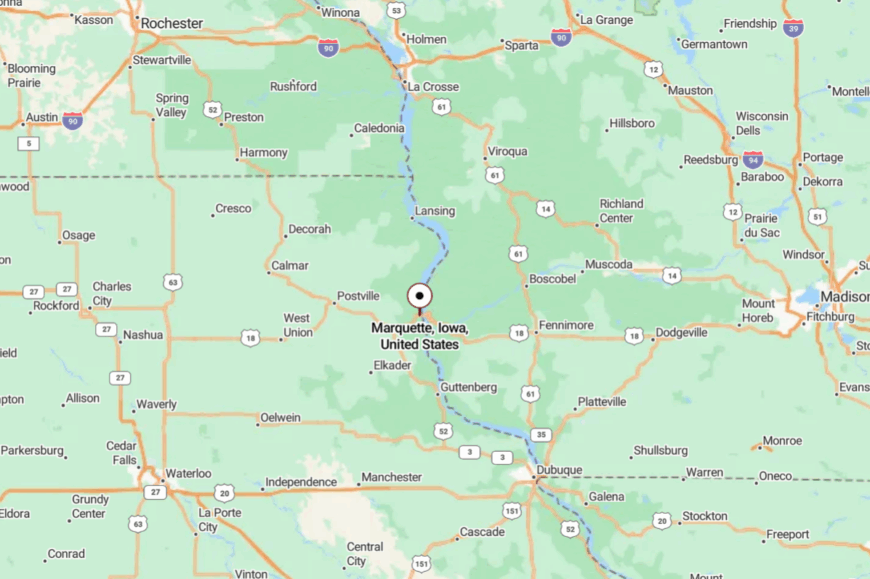
Marquette lies in Clayton County on US-18 beside the Mississippi, just south of Prairie du Chien, Wisconsin. It’s about 60–65 miles north of Dubuque.
The approach curls through wooded hills before the river and bluffs close in. It feels like the road leads you into a sheltered pocket of time.
22. McGregor — Historic Ledges and River Lullabies
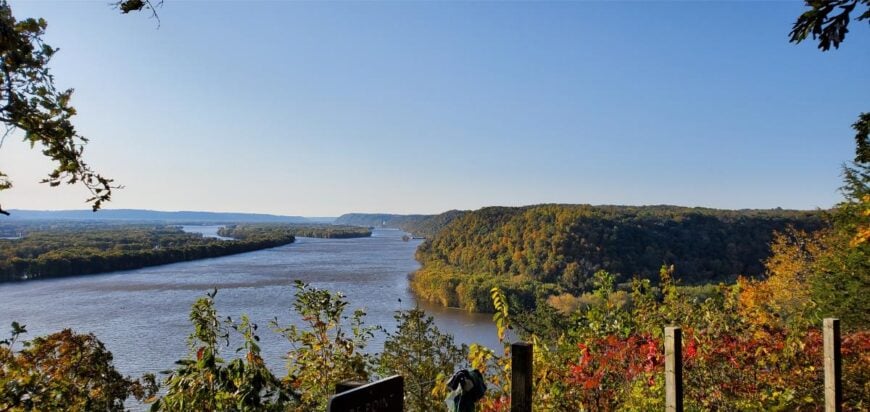
McGregor spills along the riverfront beneath towering rock ledges, its 19th-century storefronts glowing warm at sunset. Seclusion comes from the land’s embrace—bluffs above, river below, and only two-lane ribbons connecting to the wider world.
The vibe is artsy and storied: antique shops, a river museum, and cafés with creaky floors. Hike Pikes Peak State Park nearby, wander the riverwalk, or take a morning photography stroll when mist hangs in the trees.
Tourism and local crafts mingle with everyday river life. When night falls, the ledges keep town light low and the stars bright. It’s a small amphitheater for quiet days.
Where is McGregor?

Also in Clayton County, McGregor sits adjacent to Marquette on US-18 along the Mississippi. It’s roughly 60 miles north of Dubuque.
You arrive via a descent that feels like a curtain lifting on water and stone. Close to the highway, yet cradled enough to feel secret.
21. Guttenberg — Limestone Porches over a Thousand Islands
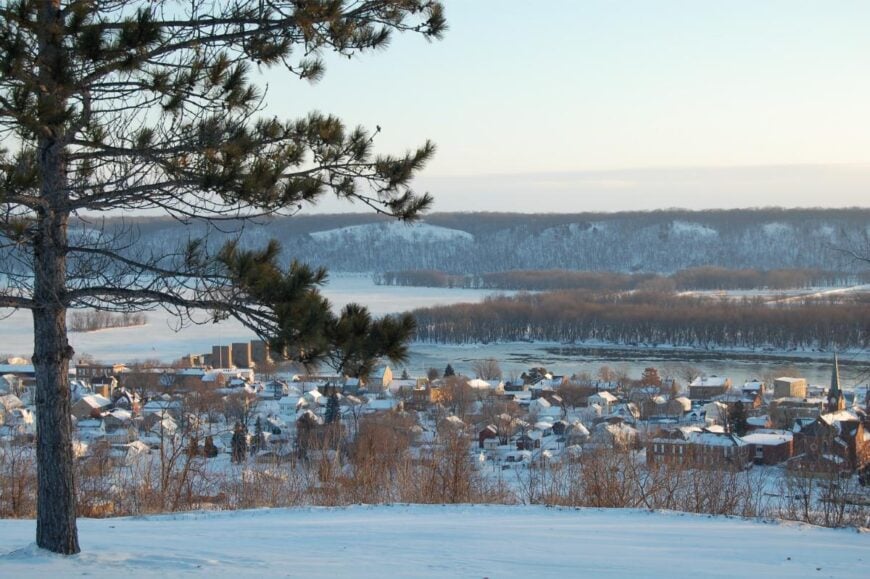
Guttenberg lines the river with limestone houses and shady porches, looking out on islands that scatter the channel like stepping stones. Its apartness is courtesy of the long, scenic US-52 corridor and the river’s natural buffer.
The feel is heritage-calm and neighborly—lock-and-dam watching, evening strolls, and porch swings answering the towboat horn. Walk the riverwalk, explore historic stonework, or paddle among backwater lilies.
Small manufacturing, shops, and river tourism keep the lights on. When the sun drops, islands turn to silhouettes and the town glows like a lantern strip. Here, slowing down feels like tradition.
Where is Guttenberg?
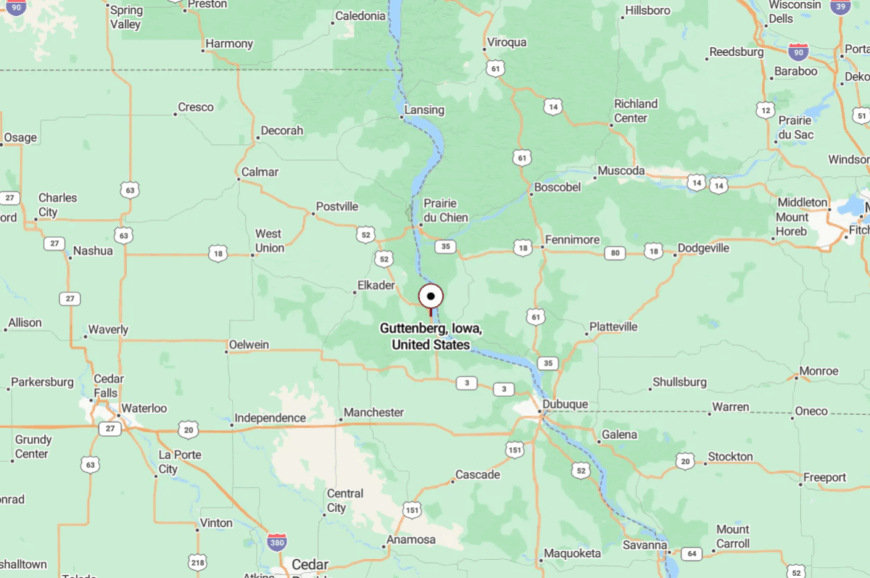
In Clayton County on US-52/Great River Road, Guttenberg sits 35–40 miles north of Dubuque. The drive traces bluffs and wide bends of the river.
Town arrives gradually—stone walls, shade trees, then water. Near enough for errands, far enough for stars.
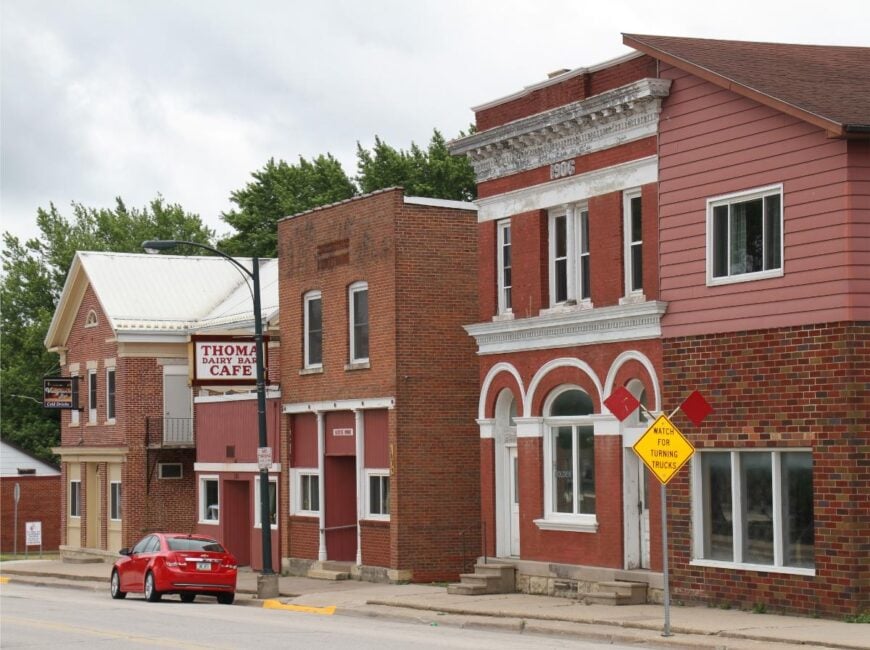
Garnavillo rests on gentle prairie heights just inland from the river, a tidy grid with heritage churches and deep lawns. Seclusion comes from being off the fast lanes, surrounded by cropland and shelterbelts that blur road noise.
The vibe is hushed and homey—garden plots, bake sales, and a museum where local stories linger. Bike a farm-road loop, browse a small antique corner, or picnic under cottonwoods that frame big-sky sunsets.
Farming and small trades set the rhythm. When wind moves through corn and trees in turn, the town seems to nod along. It’s ordinary life, beautifully quiet.

Garnavillo sits in Clayton County on US-52, about 10 miles north of Guttenberg. Access comes via two-lane routes that crest open ridges.
The last miles are all horizon and hedgerows. It’s easy to reach, yet wrapped in quiet fields.
19. Elkader — Stone Bridge and River Murmur
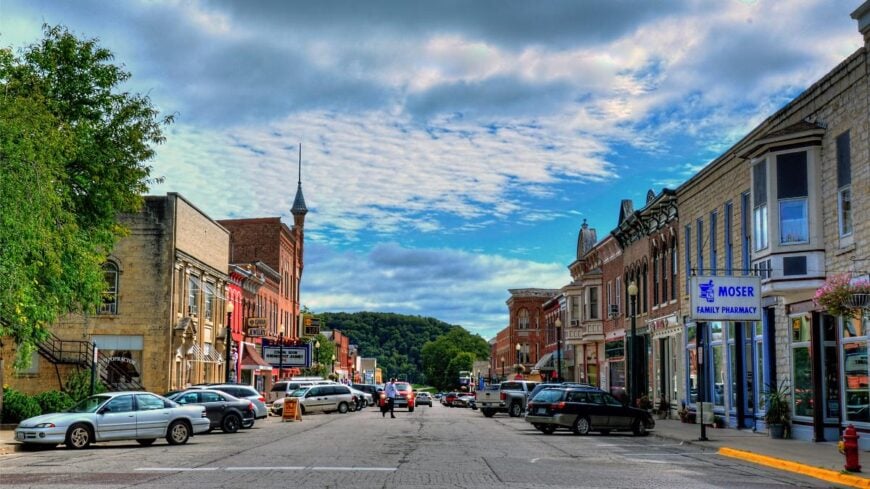
Elkader curls along the Turkey River, famous for its graceful stone arch bridge and walkable main street. Its apartness lies in the valleys and hills that cocoon it, keeping highway speed at a distance.
The vibe is cultured-rural: galleries and cafés, a historic opera house, and anglers working riffles at dusk. Paddle the river, hike nearby forest trails, or linger over a bakery breakfast with the windows open to birdsong. County offices and small businesses share space with weekend visitors.
When lights warm the bridge arches, the river hum becomes a lullaby. This is a good town for unhurried hours.
Where is Elkader?

In Clayton County, Elkader sits at the junction of IA-13 and IA-56, roughly 15 miles west of Guttenberg. Approaches wind through wooded hills and farm valleys.
The river appears just as storefronts gather. You arrive slower than you planned—and that suits the place.
18. Farmersburg — Quiet Crossroads above the River Country
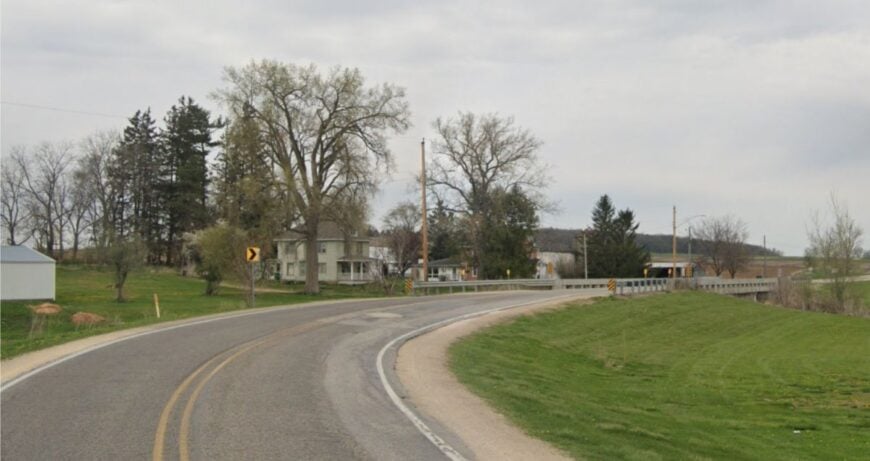
Farmersburg is a small, high-ground crossroads where Main Street meets big sky and the nights ring with crickets. Seclusion comes from being well off the river highway and surrounded by fields that make everything feel farther away.
The mood is plainspoken and peaceful—porch steps, ballfields, and an elevator that watches the seasons turn. Walk a grid of calm streets, bird along hedgerows, or follow gravel to a hidden creek crossing.
Agriculture is the steady anchor here. Even a breeze sounds like it has time to spare. It’s a pocket of stillness on the prairie shoulder.
Where is Farmersburg?
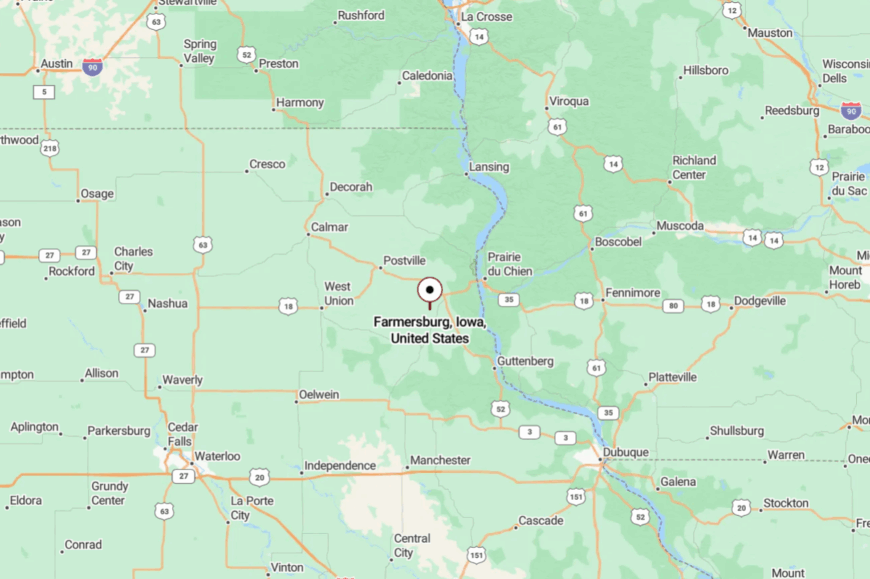
Set in Clayton County, Farmersburg lies 7–10 miles northeast of Elkader, reached by IA-18 and county roads. The approach is all open fields and windbreaks.
Town appears in a single view—water tower, steeple, and sky. It’s the kind of place you find by intention, not accident.
17. Luana — Hilltop Lots and Long Views
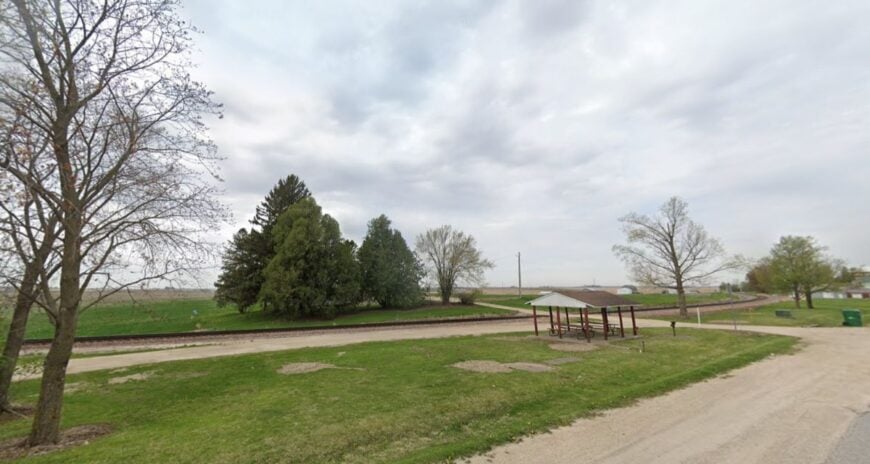
Luana spreads across a hilltop with wide lots and farm edges that let the wind pass through like a friendly guest. Its apartness shows in the low traffic and the miles of pasture and cropland between neighbors.
The vibe is work-day practical and evening-soft—porch chairs, garden hoses, and swallows tracing arcs over soybeans. Walk to a small park, ride back roads toward the Yellow River headwaters, or time your visit for a community grill-out.
Agriculture and local plants support the week. When the sun drops, the horizon turns to a slow-moving ribbon. Quiet lives comfortably here.
Where is Luana?
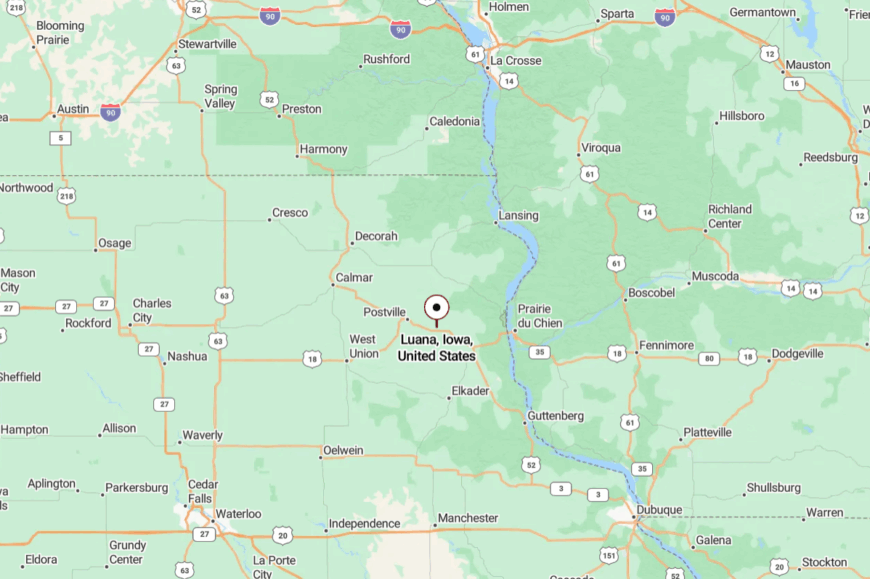
Luana sits in Clayton County along US-18/IA-51, just north of Monona and a short drive west of the Mississippi. Two-lane approaches crest and dip over ridges.
The last turn feels like stepping onto a prairie balcony. Close to river country, but lifted into its own calm.
16. Monona — Garden City on a Windy Ridge
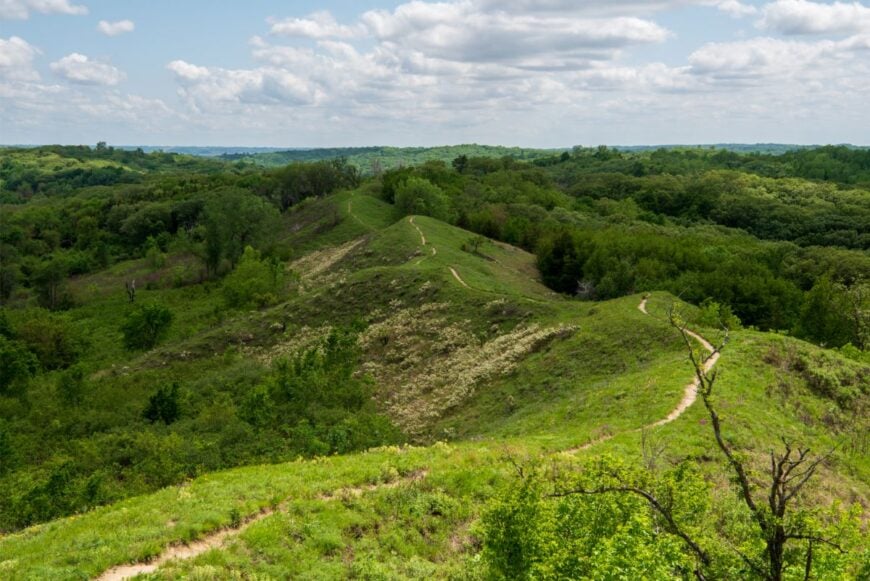
Monona calls itself the Garden City, and the name fits: yards brim with blooms, and streets hold onto summer like a friendly habit. Seclusion comes from its ridge-top perch and the long miles of two-lane between towns.
The vibe is bright-porch and small-festival—music in the park, library events, and trailheads pointing toward trout streams. Hike the driftless bluffs, spot eagles on a winter drive, or grab pie after a Saturday market.
School events and farm services knit weekdays together. When evening winds sweep the ridge, you can hear flags ripple and leaves answer. It’s cheerful without being loud.
Where is Monona?
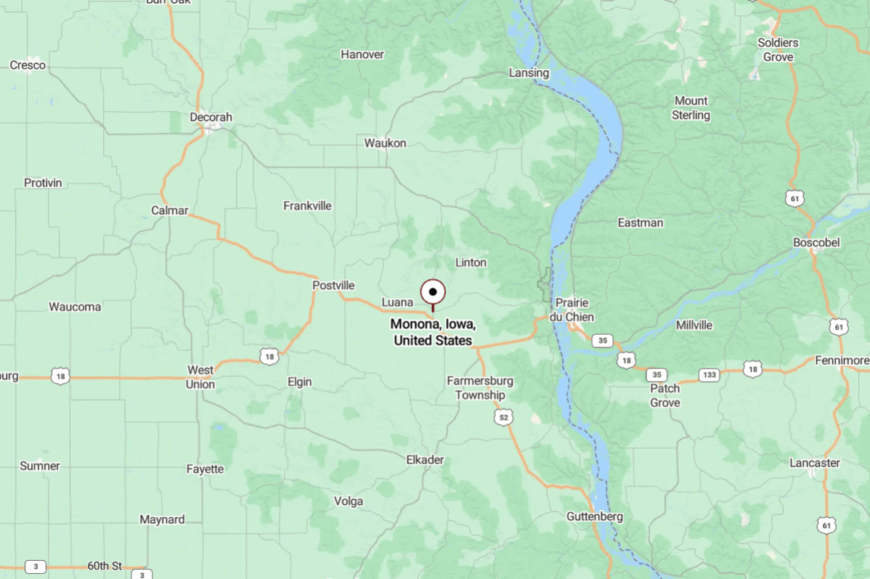
In Clayton County, Monona is 12 miles west of Marquette on US-18. The road up crosses rolling farmland to a high, airy main street.
You arrive with a view that runs for counties. The ridge makes even close things feel far.
15. Colesburg — Creek Bends and Maple Shade
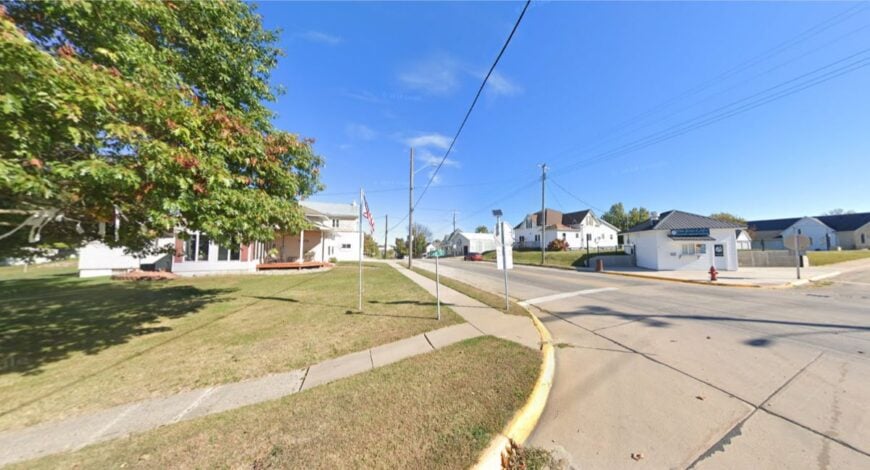
Colesburg curls along a couple of quiet creek bends, a small town with maples that seem to know everyone by name. Its apartness comes from being a step off the main routes, where county roads choose shade over speed.
The vibe is porch-supper and Saturday-morning toolshed—hands-on, tidy, and neighborly. Fish a shaded pool, walk past gingerbread trim, or take a gravel loop to photograph barn quilts. Grain and small shops share the week’s work.
In the hush after sunset, you hear water talk under the bridge. It’s a soft-edged place to catch your breath.
Where is Colesburg?
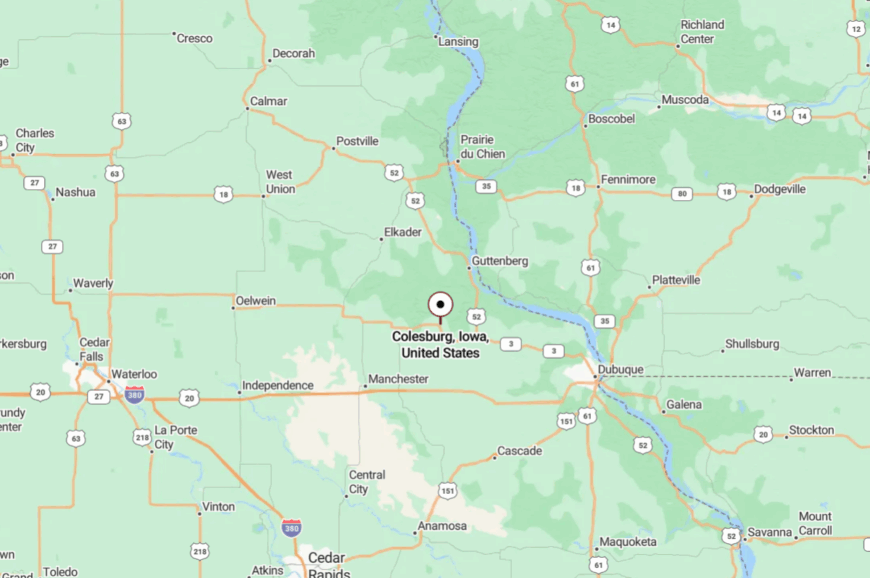
Colesburg sits in Delaware County along IA-3, about 18 miles northeast of Dyersville. Access is via calm two-lanes and a few right-angle section roads.
The town arrives all at once—water tower, maples, and porches. It’s near the route, yet hidden by its own trees.
14. Greeley — Prairie Hamlet with a Parkside Heart
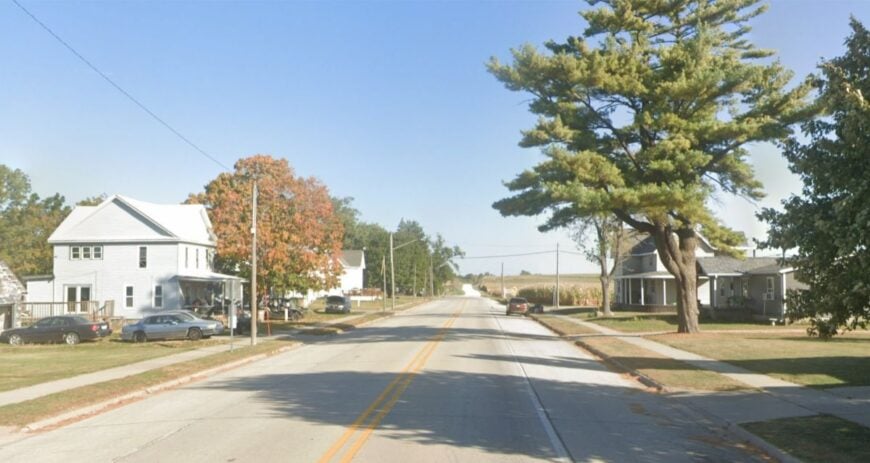
Greeley is a prairie hamlet where the park sits at the center and streets feel drawn with a careful hand. Seclusion stems from the miles of cropland that ring it and the way bigger highways angle elsewhere.
The mood is bright-bench and ballfield lights—kids shooting hoops, church suppers, and evening walks with the dog. Picnic under big shade trees, trace a bike loop to a country bridge, or follow a gravel spur to a timber patch alive with birdsong.
Farming and local services set the pace. When the last softball cheer fades, crickets take over without missing a beat. Ordinary days are the charm here.
Where is Greeley?

In Delaware County, Greeley lies about 10 miles northwest of Manchester, reached via IA-13 and short county connectors. The approach is a simple ribbon through fields.
Turn once, and the town gathers neatly around its park. It’s small on the map, big on breathing room.
13. Hopkinton — College Ruins and River Whispers
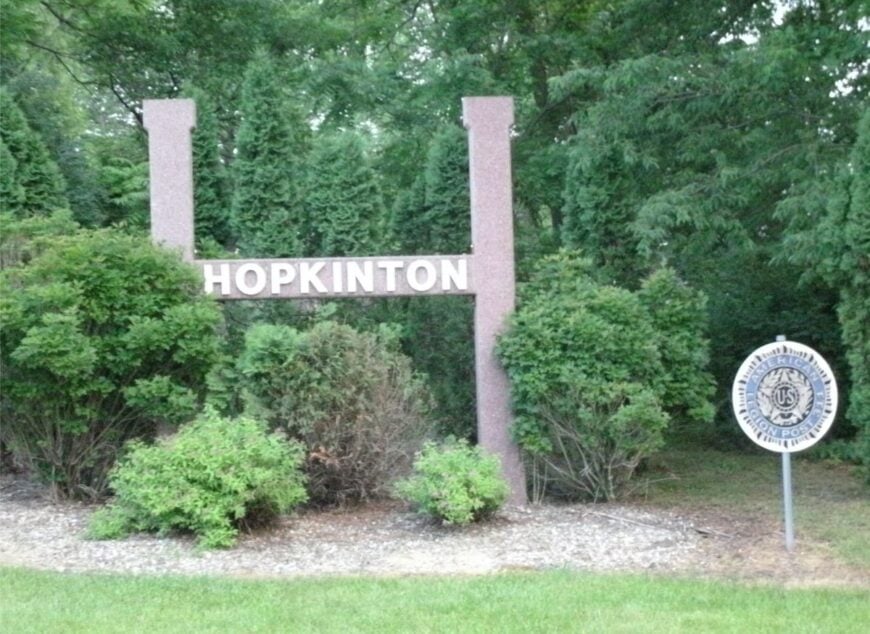
Hopkinton carries the gentle ghosts of Lenox College, brick halls peeking through trees above the Maquoketa River. Seclusion comes from rolling farmland and the slow, scenic routes that prefer barns to billboards.
The vibe is history-rich and easygoing—museum rooms, leafy sidewalks, and porch talk that runs to twilight. Tour the old campus, wade a river riffle, or browse a café where local history sits beside the pie case.
Farming and small businesses hold the week steady. As evening deepens, the college green gathers a soft hush. It’s a quiet that teaches you to listen.
Where is Hopkinton?
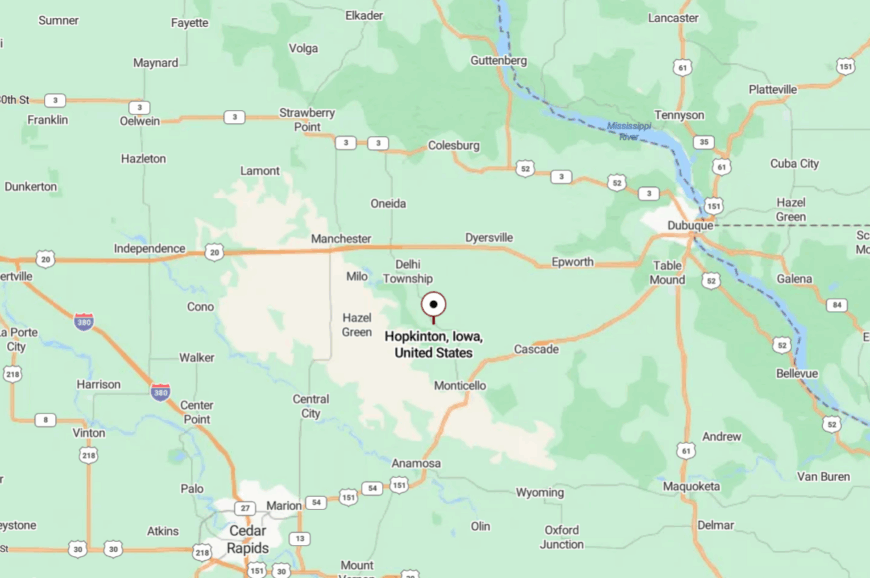
Hopkinton sits in Delaware County on IA-38, roughly 12 miles south of Manchester. You’ll roll in on two lanes, bending through low ridges and creek cuts.
Brick and shade announce the town before signs do. It’s close to everywhere local, far from hurry.
12. Oxford Junction — Roosters, River, and Old-World Corners
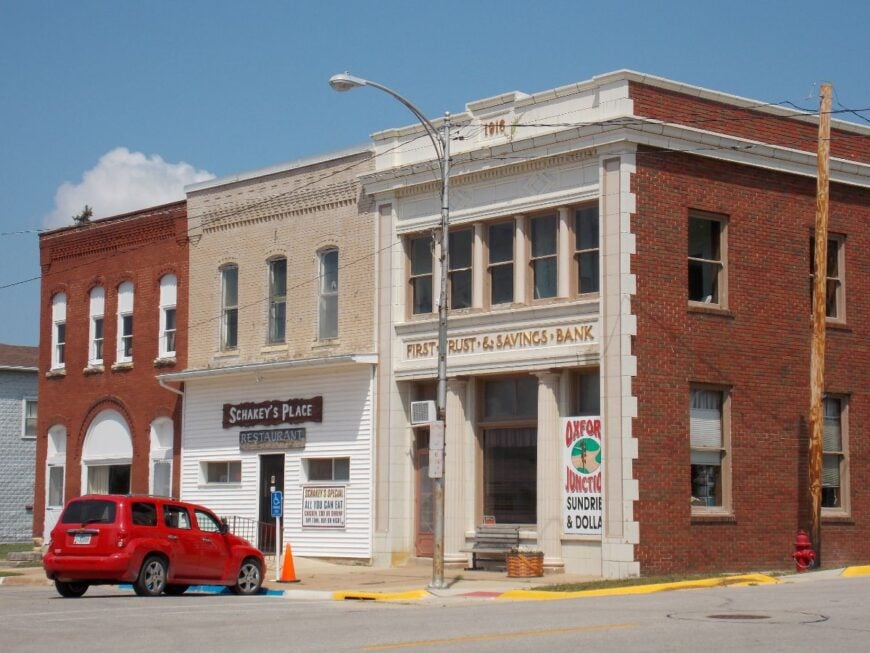
Oxford Junction spreads along the Wapsipinicon with Czech-style corners and porches that look like they were built for visiting. Its apartness is a function of distance and river curves that keep major routes at bay.
The vibe is quirky-quiet—mural roosters, a vintage depot, and Saturday yard-sale maps tacked up at the café. Fish the Wapsi, pedal a low-traffic loop to timber, or ramble past painted cornices downtown.
Farming, small shops, and river recreation share the load. At night, the river breathes cool, and the town breathes with it. It’s small, sincere, and surprisingly storied.
Where is Oxford Junction?
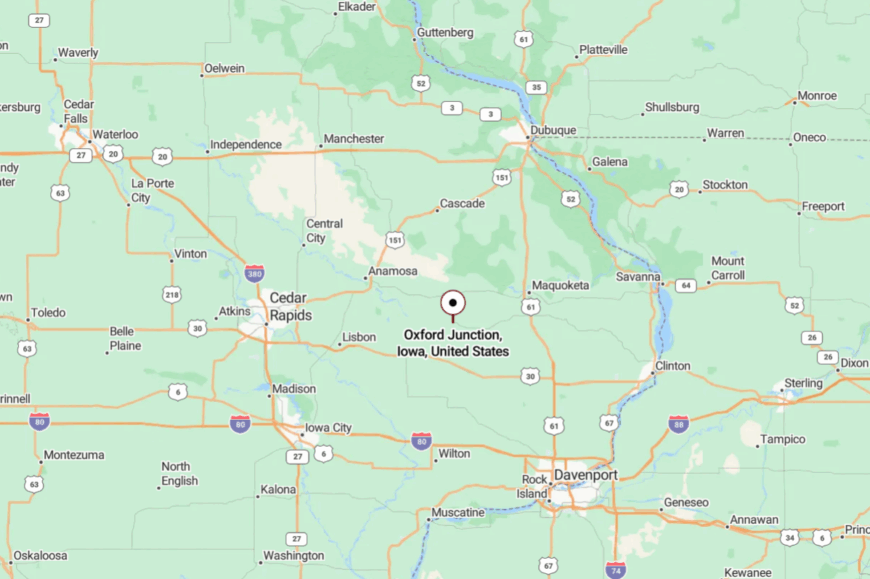
In Jones County, Oxford Junction sits about 20 miles east of Anamosa, near the Wapsipinicon River. Access is via county roads like X64 and E17 off US-151/IA-64 corridors.
The last miles are fields, timber, and gentle curves. You know you’ve arrived when the rooster mural says so.
11. St. Donatus — Stonework and Steeples on a Quiet Ridge
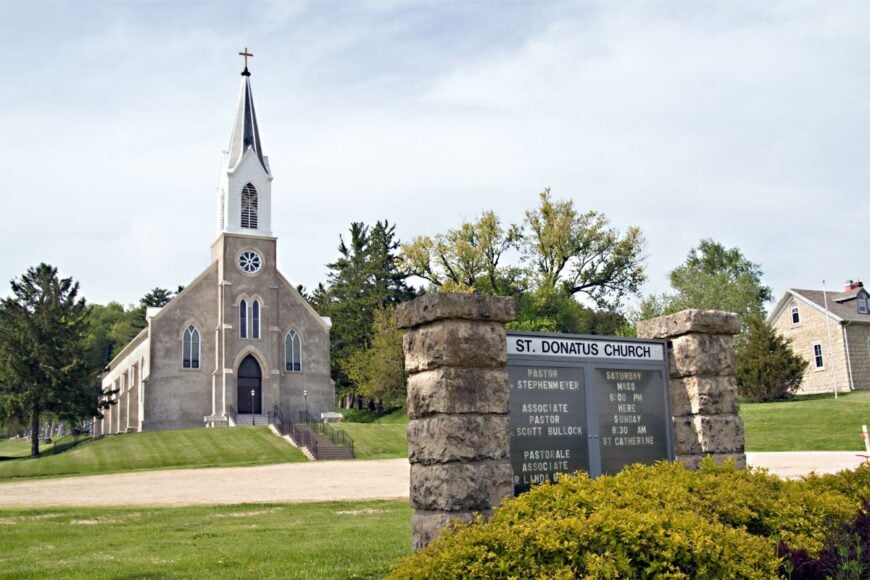
St. Donatus looks plucked from Luxembourg—limestone houses, a hillside way of the cross, and tidy gardens stepping down a ridge. Seclusion comes from the winding US-52 bluff road and the absence of anything resembling a rush hour.
The vibe is old-world and serene: church bells, vineyard rows, and suppers that last as long as the light. Walk the chapel path, tour historic farmsteads, or linger over a pastry where recipes crossed the ocean.
Small inns, vineyards, and heritage tourism keep things humming gently. When dusk turns the stone warm and the valley cool, the town feels like a kept promise. It’s a beautiful place to practice the art of slow.
Where is St. Donatus?
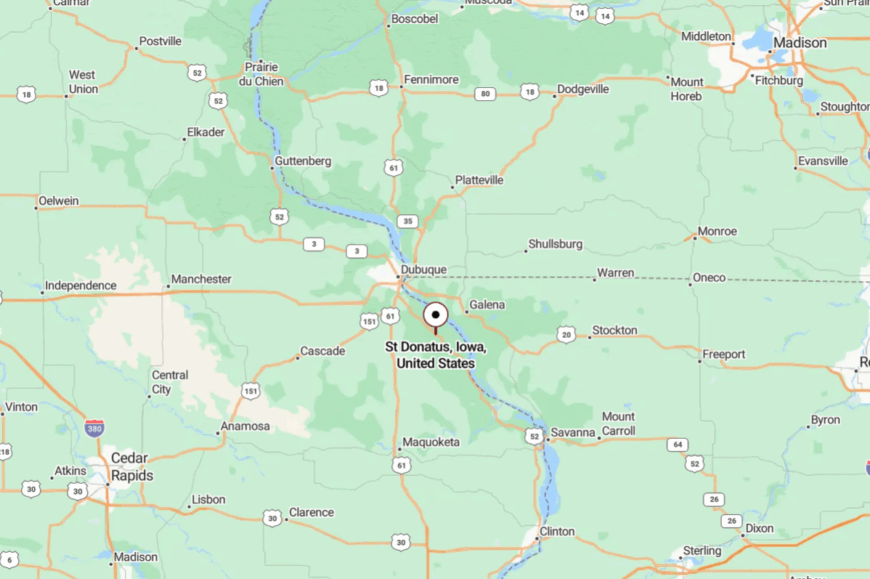
Set in Jackson County along US-52, St. Donatus is about 15 miles south of Dubuque. The approach is a ribbon cut into bluffs with farm valleys opening below.
Signs are modest; spires and stone walls do the welcoming. Close to a city, yet quietly its own world.
10. Delhi — Lakeside Solitude in Delaware County
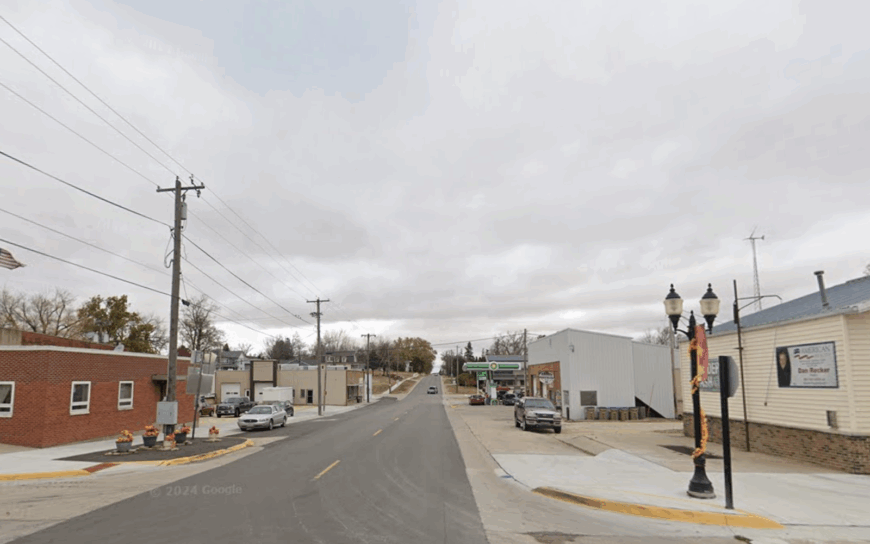
Delhi is a quaint town with an approximate population of 500 residents, nestled along the serene shores of Lake Delhi. There is an abundance of outdoor activities like fishing, boating, and picnicking by the lake.
The town thrives on agriculture and tourism, with local farms and lakefront businesses contributing to its economy. What makes Delhi truly secluded is its sprawling acre-plus lots and the lush greenery that surrounds the area, providing a peaceful retreat from urban hustle.
The community’s close proximity to the lake offers a tranquil lifestyle that’s hard to find elsewhere. For anyone seeking lakeside solitude, Delhi is a hidden gem worth exploring.
Where is Delhi?
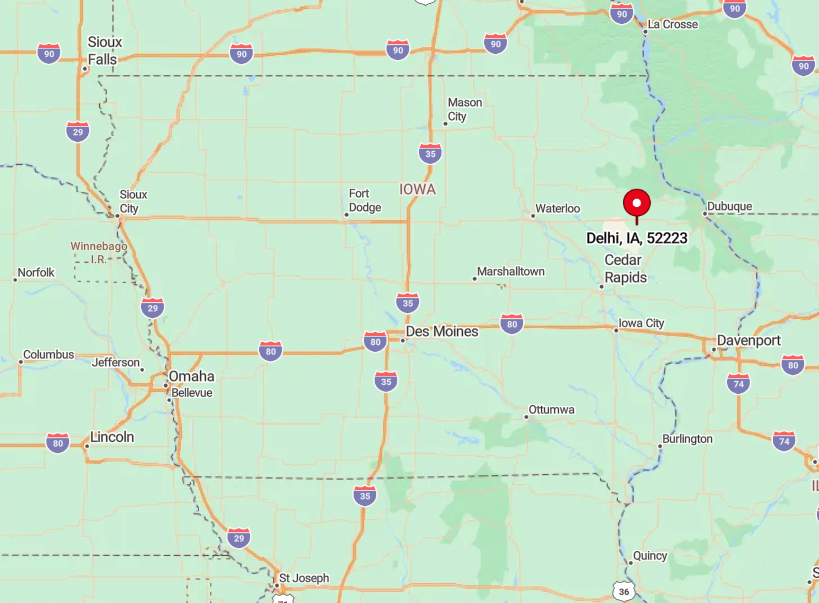
Located in Delaware County, Delhi sits in Eastern Iowa, approximately 50 miles northeast of Cedar Rapids. Its secluded nature stems from being nestled away from major highways, enveloped by rolling hills and farmland.
To get there, take Highway 13 north from Cedar Rapids and then venture onto county roads that lead directly into town. The journey itself is a scenic drive through the heart of Iowa’s countryside, making the destination feel even more remote and peaceful.
9. Edgewood — Peaceful Living at the County’s Edge
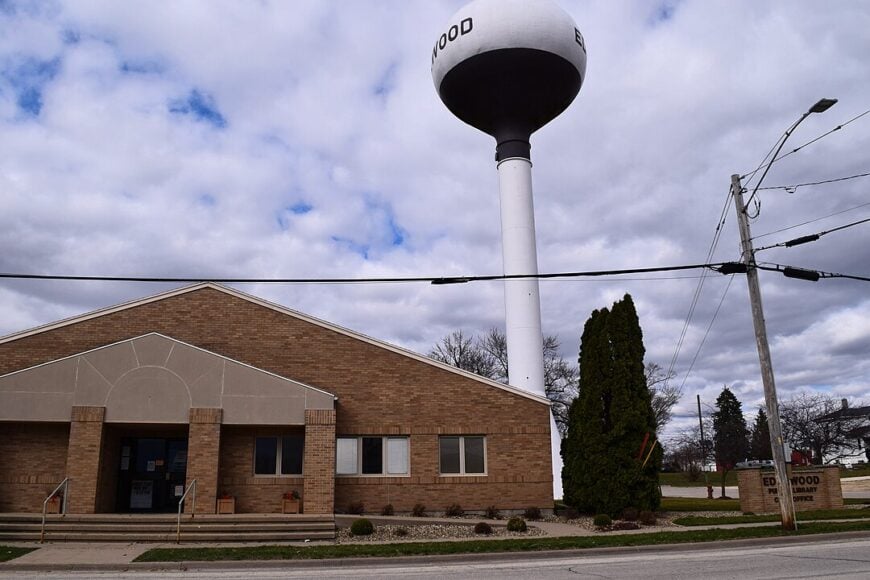
Edgewood, with a population of around 860 people, is perched at the edge of Clayton and Delaware counties. The town is charming with its peaceful ambiance and friendly community vibe.
Edgewood offers various activities, including visiting the Osborne Nature Center or enjoying the annual Edgewood Rodeo Days, which is a highlight for many locals and visitors alike. The main industries here are agriculture and small businesses, reflecting the town’s rural roots.
Edgewood’s seclusion is characterized by its low housing density and ample green spaces that provide a quiet living environment. The town’s location away from bustling urban centers ensures a tranquil lifestyle for its residents.
Where is Edgewood?

Situated in Eastern Iowa, Edgewood is approximately 60 miles north of Cedar Rapids. Its secluded feel comes from being nestled amidst rolling farmland and being distant from major highways.
Take Highway 13 north and then turn onto Highway 3, which leads directly into Edgewood. The drive offers beautiful vistas of Iowa’s countryside, underscoring the town’s peaceful isolation and making it an ideal escape from city life.
8. Clermont — Historic Charm in Secluded Settings

Clermont is a small town of about 620 residents, known for its rich history and beautiful architecture. One favorite spot is Montauk Historic Site, the former home of Iowa’s 12th governor, which offers guided tours and panoramic views.
Outdoor enthusiasts enjoy the nearby Volga River Recreation Area for hiking and camping. Agriculture remains a mainstay in Clermont, contributing to its economy and rural character.
The town’s seclusion is accentuated by its spacious landscapes and distance from city congestion, providing a serene environment that blends history with tranquility.
Where is Clermont?
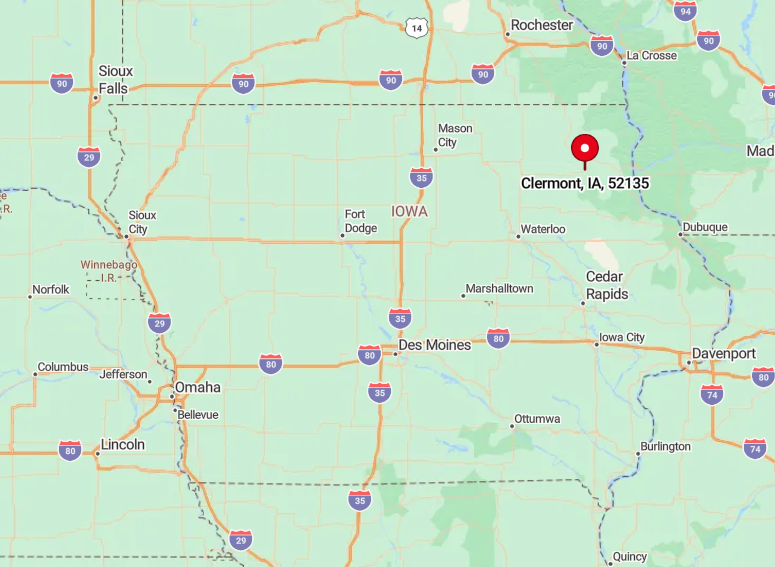
Located in Fayette County, Clermont sits in Northeastern Iowa, approximately 70 miles northeast of Cedar Rapids. Its secluded nature is due to its position away from major transportation routes, nestled among rolling hills and the Turkey River.
Reach Clermont by taking Highway 150 north and then branching off onto local roads. This path leads through picturesque terrain, making the journey as enjoyable as the destination itself.
7. Waterville — Nature’s Haven in Allamakee County

Waterville is a tiny town with a population of just over 140, but it’s big on natural beauty. The area has lush forests and proximity to Yellow River State Forest, where hiking, fishing, and camping are favorite pastimes.
There aren’t many industries here, which adds to its peaceful charm; the local economy largely revolves around agriculture and outdoor recreation.
What makes Waterville secluded is its large lots, low population density, and the enveloping greenery that provides a quiet environment. It’s a haven for nature enthusiasts seeking a retreat from the noise and pace of urban areas.
Where is Waterville?
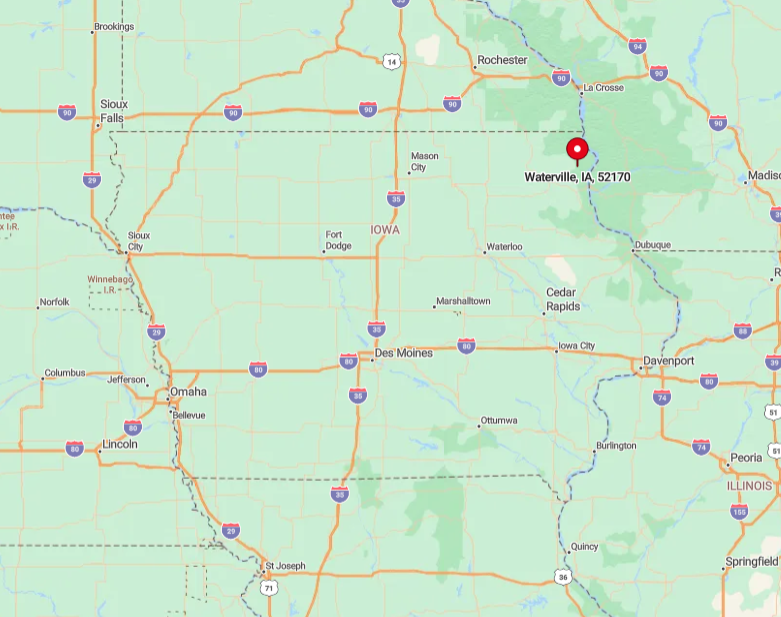
Sitting in Allamakee County, Waterville is located in the northeastern corner of Iowa, about 20 miles south of the Minnesota border. Its seclusion is heightened by the surrounding forests and valleys, making it feel tucked away from the rest of the world.
To get there, take Highway 76 north from Marquette, winding through scenic landscapes that lead directly into town. The remote setting and limited traffic contribute to Waterville’s quiet and secluded atmosphere.
6. Osterdock — Tiny Town with Expansive Horizons

Osterdock is one of Iowa’s smallest communities, housing around 50 residents. Despite its size, Osterdock is full of charm, especially with its local gathering spot, the historic Osterdock Store and Bar. The town is enveloped by expansive fields and open skies, offering breathtaking sunsets that seem to stretch on forever.
Agriculture is the lifeblood of Osterdock, and its low housing density provides residents with plenty of space and privacy. The town’s isolation from urban centers and its vast surrounding landscapes make it a perfect spot for those seeking a quiet, rural lifestyle.
Where is Osterdock?
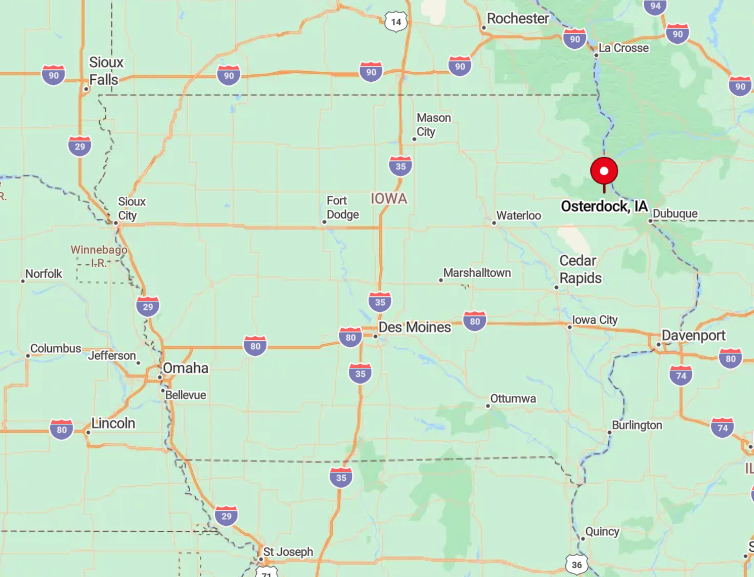
Located in Clayton County, Osterdock sits in Eastern Iowa, roughly 15 miles southwest of Guttenberg. Its secluded nature is due to its location off major highways, accessible primarily by county roads like Highway C7X.
To get there you go through a network of scenic backroads to reach Osterdock, which enhances the feeling of escaping to a peaceful retreat. The vastness of the surrounding farmland adds to the town’s sense of serenity and isolation.
5. Elkport — Riverside Peace Away from it All
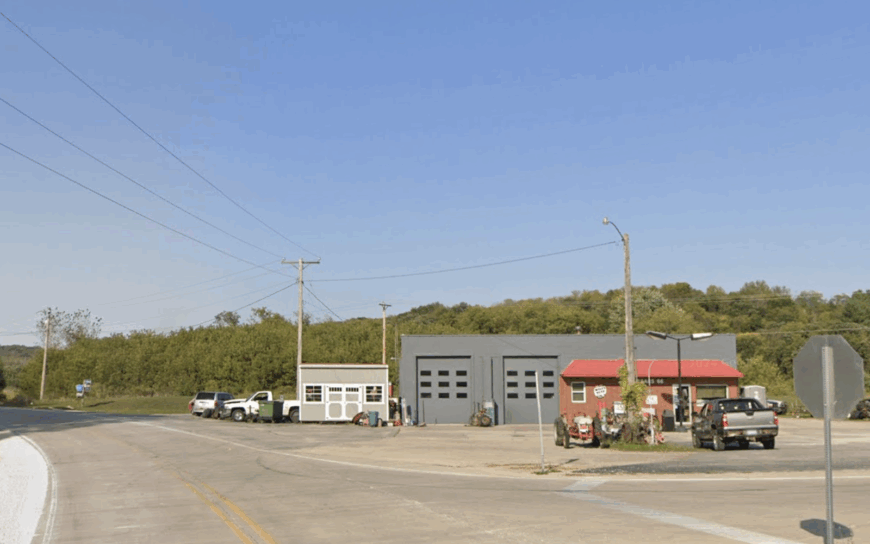
Elkport is a tiny community with an estimated population of about 35 people, offering a peaceful riverside setting along the Turkey River. The town has lots of opportunities for fishing, canoeing, and enjoying nature without the crowds.
There are minimal industries in Elkport, adding to its tranquil and untouched character. The seclusion here is amplified by the sparse population and natural barriers like the river and surrounding woodlands. For those looking to completely disconnect and enjoy the sounds of nature, Elkport is an idyllic choice.
Where is Elkport?
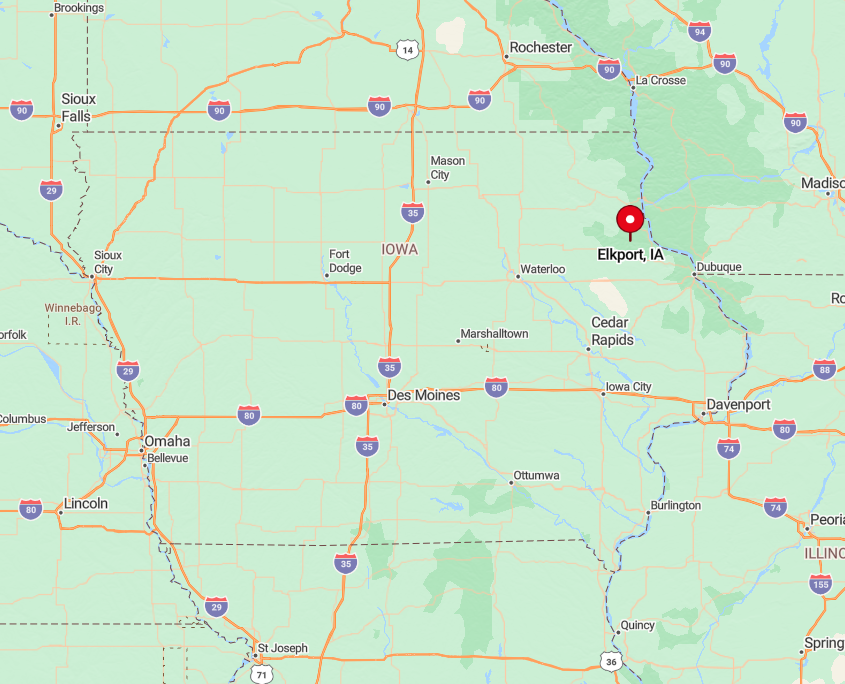
Elkport is located in Clayton County, Eastern Iowa, about 50 miles northeast of Cedar Rapids. Its secluded state is a result of being nestled along the river and away from major roads.
The best way to reach Elkport is by following Highway 13 north and then taking local county roads that wind through the countryside. The journey through rolling hills and forests enhances the sense of escape as you approach this hidden riverside haven.
4. Garber — A Secluded Retreat in the Valleys
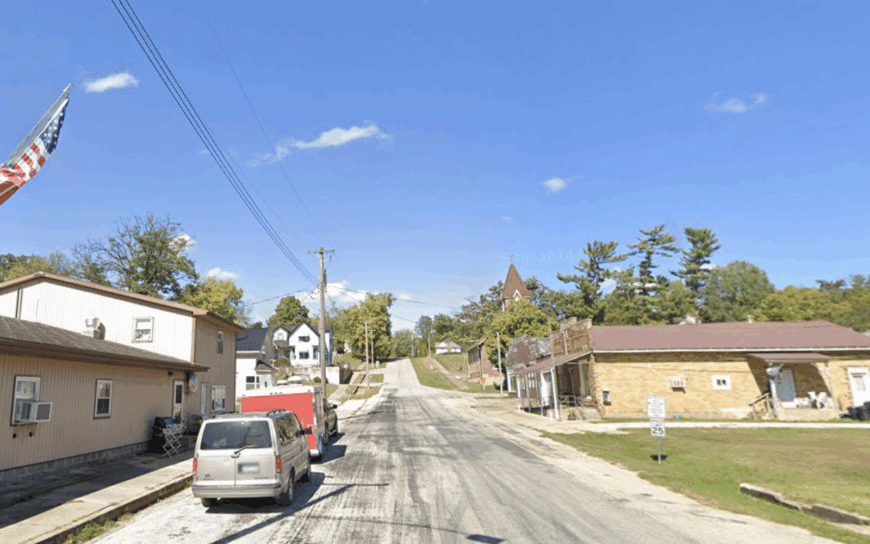
Garber is home to around 80 residents and is nestled within picturesque valleys that define its landscape. Garber features a serene environment and extensive undeveloped land that’s perfect for hiking and nature walks.
The main industry here is agriculture, with many locals engaged in farming and related activities. Garber’s seclusion comes from its remote location and the natural enclosure provided by the surrounding hills and valleys. It’s an ideal spot for anyone seeking solitude and a deep connection with the natural world.
Where is Garber?
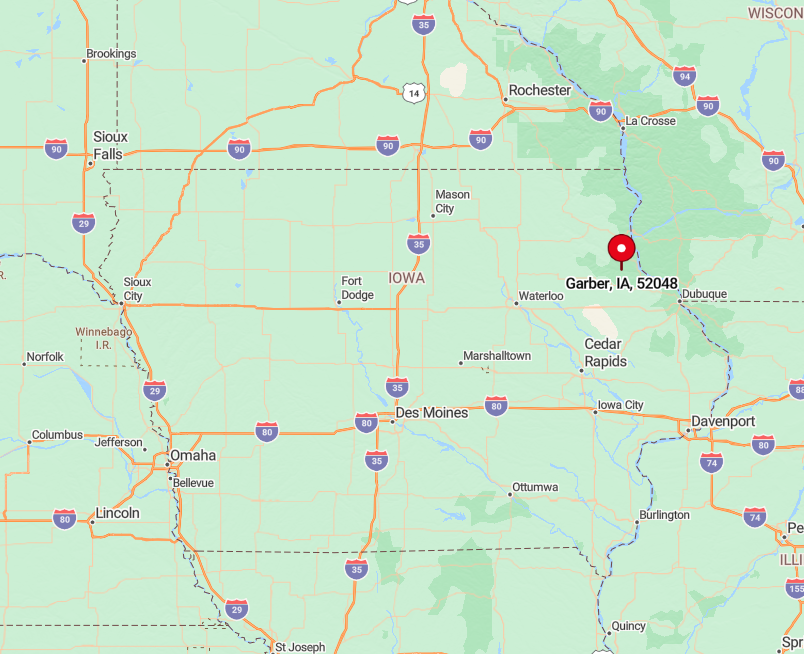
Situated in Clayton County, Garber is in Eastern Iowa, about 60 miles northeast of Cedar Rapids. Its isolated feel is due to its position off the main highways, accessible primarily via Highway 56 and county roads.
Take a leisurely drive through the rolling countryside to reach Garber, enjoying the peace that comes with leaving the busy roads behind. The town’s seclusion is further enhanced by the winding valleys that cradle it, making it a true retreat.
3. St. Olaf — The Quiet Village Amid Rolling Hills
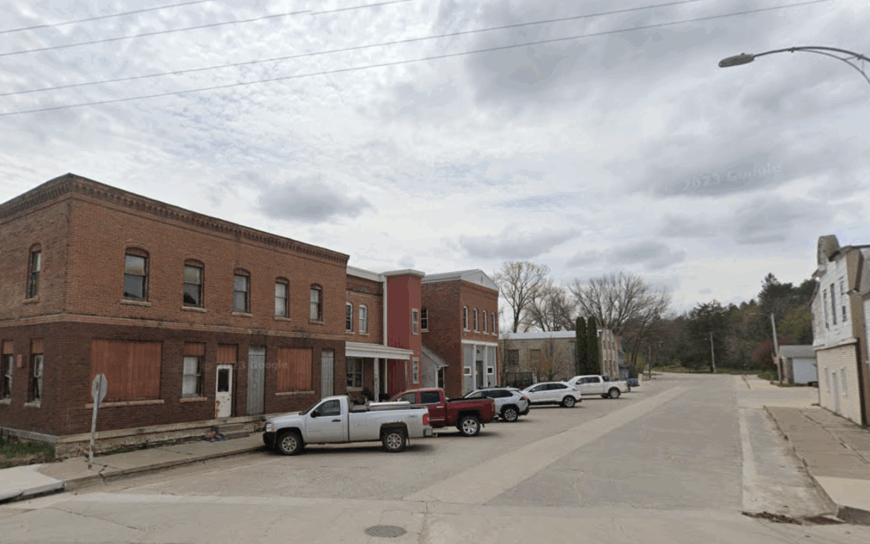
St. Olaf is a small village with approximately 100 residents, surrounded by rolling hills and expansive farmland. One of the hidden gems here is the St. Olaf Tavern, famously known for serving some of the best tenderloin sandwiches in the state.
The primary industry is agriculture, reflecting the town’s rural heritage. St. Olaf’s seclusion is due to its remote location away from major highways and cities, providing a peaceful environment where life moves at a gentler pace. It’s a place where community spirit thrives amidst the quiet of the countryside.
Where is St. Olaf?
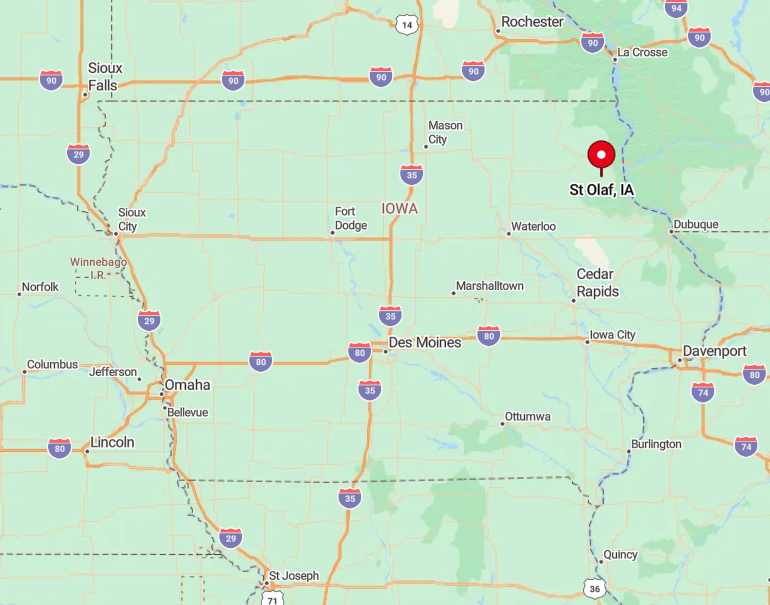
Located in Clayton County in Eastern Iowa, St. Olaf is about 15 miles west of the Mississippi River. Its secluded nature is a result of being nestled along less-traveled county roads like Highway 13 and Gunder Road.
You can enjoy a scenic drive through the heart of Iowa’s farm country to get there. The town’s isolation is enhanced by the vast stretches of farmland and the gentle rolling hills that surround it, making it a perfect spot for those seeking tranquility.
2. Harpers Ferry — Serenity on the Mississippi Bluffs
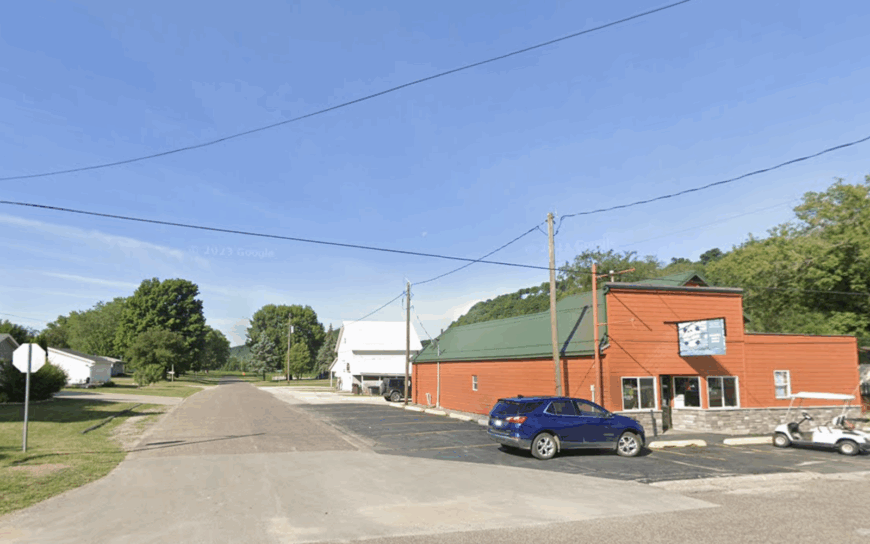
Harpers Ferry boasts a population of around 330 and is set against the stunning backdrop of the Mississippi River bluffs. The town has breathtaking river views and outdoor activities like fishing, boating, and exploring nearby Effigy Mounds National Monument.
Tourism plays a significant role in the local economy, but the community maintains a peaceful, low-density feel. Harpers Ferry’s seclusion is due to its expansive natural landscapes and the quiet that comes from being a small town nestled along the river, providing a serene escape that’s both beautiful and calming.
Where is Harpers Ferry?
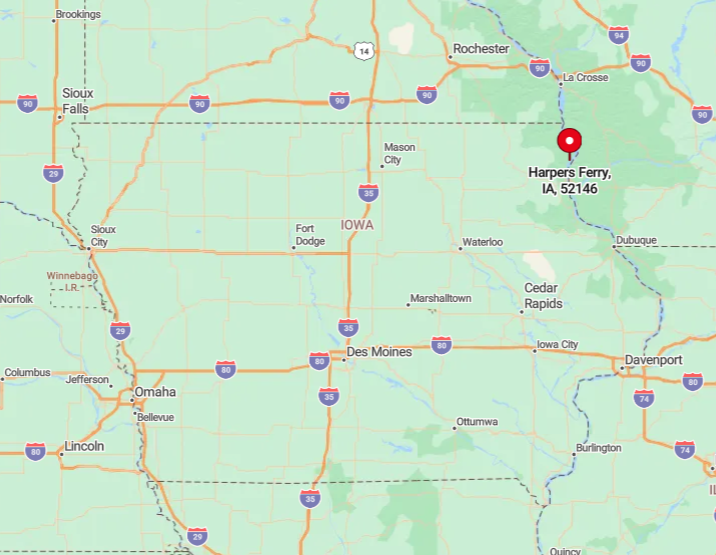
Harpers Ferry is located in Allamakee County in the northeastern corner of Iowa. Its secluded charm is heightened by its position along the Mississippi River and away from major highways.
Reach the town by taking Highway 76 from Waukon, enjoying the scenic overlooks along the way. The remoteness and natural beauty of the area make Harpers Ferry a perfect retreat for those looking to immerse themselves in nature’s tranquility.
1. Volga — A Hidden Gem Along the Volga River
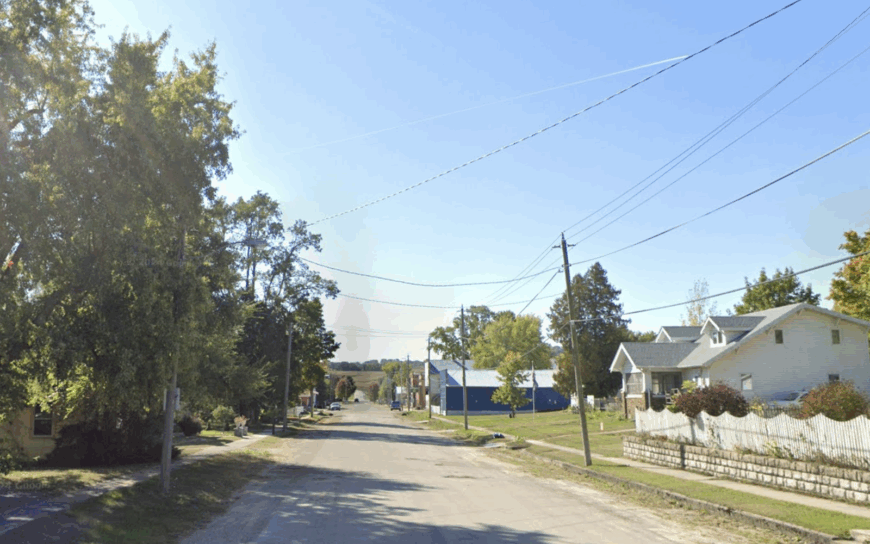
Volga, with an approximate population of 200, is a hidden gem nestled along the Volga River. The town is incredibly tranquil, surrounded by lush forests and offering ample opportunities for outdoor recreation like hiking, fishing, and camping in the nearby Volga River State Recreation Area.
The main industries here are agriculture and small local businesses, maintaining the town’s rural charm. What sets Volga apart is its sprawling acre-plus lots and its setting miles away from urban bustle, providing a secluded environment that’s perfect for those wanting to connect with nature and enjoy a slower pace of life.
Where is Volga?
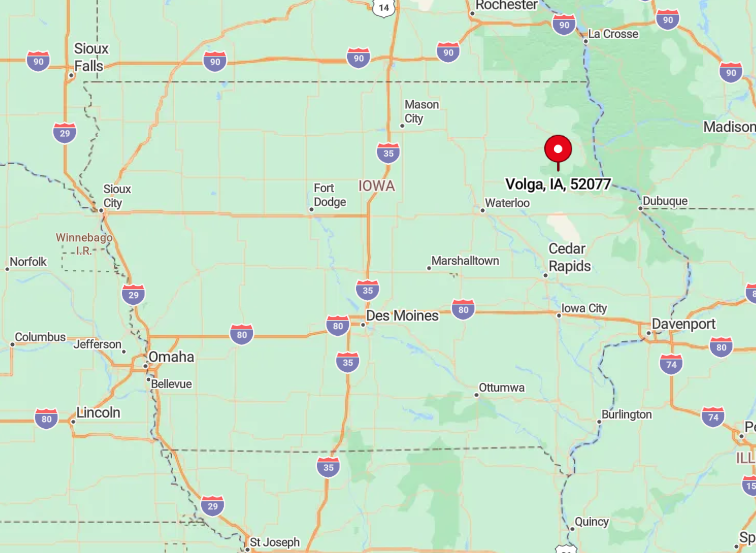
Situated in Clayton County, Volga is in Eastern Iowa, approximately 60 miles northeast of Cedar Rapids. Its secluded character comes from its location off major roadways, accessible primarily via Highway 56 and county roads like Great River Road.
The town’s serene setting along the river, combined with its remote location, makes it an ideal spot for anyone looking to truly get away from it all.

